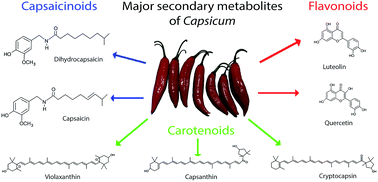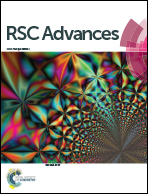The genus Capsicum: a phytochemical review of bioactive secondary metabolites†
Abstract
The Capsicum genus is one of the most popular plants consumed and cultivated worldwide, containing approximately 50 000 varieties of pepper. Due to its wide biodiversity, the chemical composition within the genus also presents a great variability. Its major applications are in food and pharmacological industry, as pepper presents a chemical composition rich in capsaicinoids, carotenoids, flavonoids and volatile compounds which is attributed to the ability of the fruit to remove insipidity, produce aromas and act against oxidative diseases. Due the existence of several cultivars there is a huge intraspecific chemical variability within each species, which can be considered as an obstacle when selecting and cultivating a species to be applied as a natural product source for a specific objective. The usage of pepper-based products in different industrial areas requires pre-established ranges of chemical compounds, such as capsaicinoids, which in high concentration are toxic when consumed by humans. Applying a pepper with a chemical profile closely related to the concentration that is required after industrial processing can improve efficacy and effectiveness of the process. An insight into the chemical characteristics of major secondary bioactive compounds within Capsicum, the factors that affect their concentration and their chemosystematic implication are reported and discussed.

- This article is part of the themed collection: Editors' collection: Food Engineering, Science, Technology, and Nutrition


 Please wait while we load your content...
Please wait while we load your content...